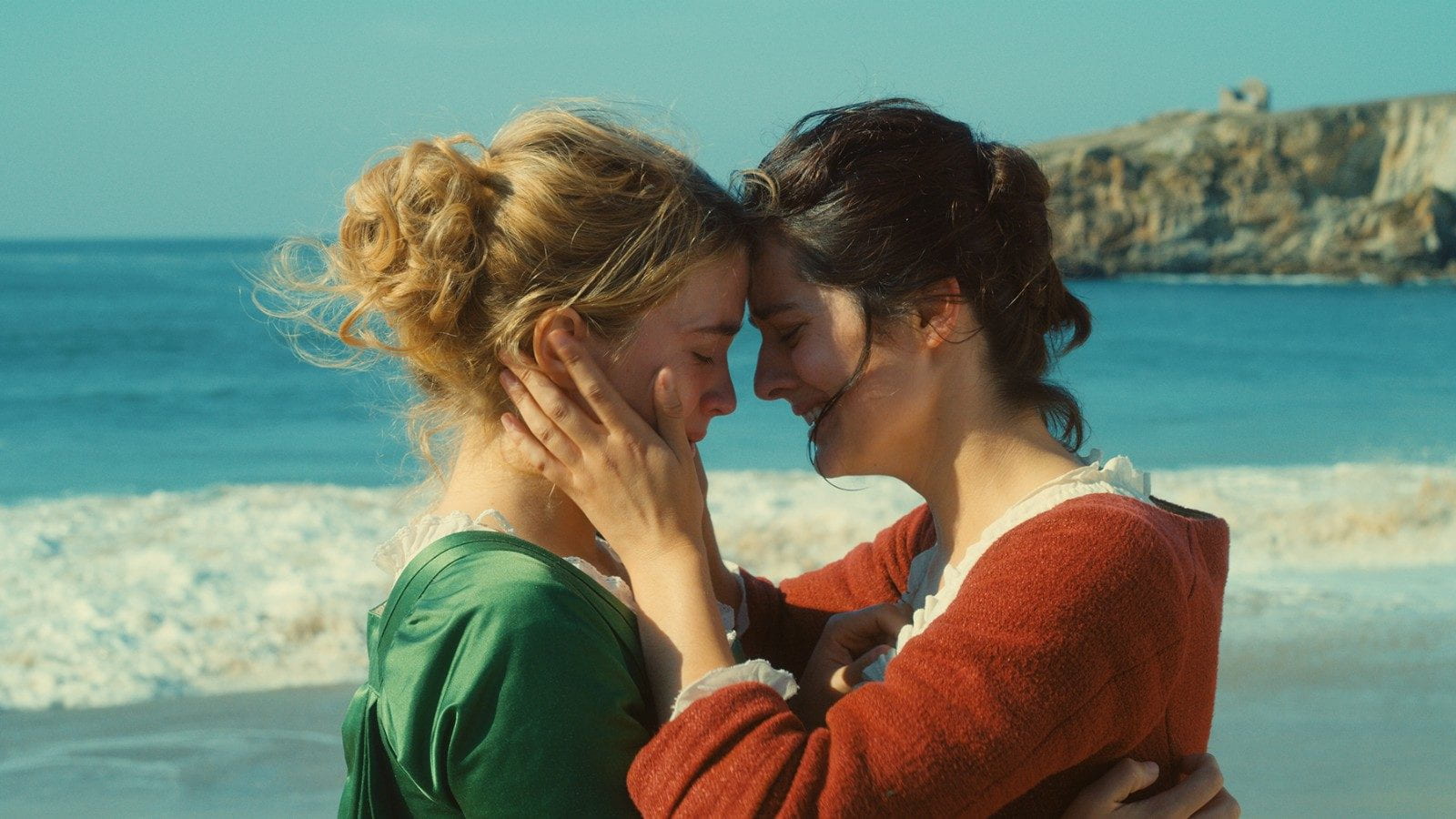Portrait of a Lady on Fire begins just as a painting begins – with a blank canvas. Suddenly, we see hands enter the frame, making the beginning strokes of what they hope will capture the reality of what they see in front of them. In the film, Marianne (Noémie Merlant), a painter, is sent on a peculiar mission that takes place on a rocky shore in Brittany, France. A noblewoman (Valeria Golino) asks her to paint a portrait of her daughter, Héloïse (Adèle Haenel), in anticipation of her marriage with a Milanese gentleman. Héloïse, however, has no desire to be married and no desire to be painted, for she sees that as the final defeat on her road to a life she does not want. Marianne is told that since the last portrait artist did not last, she will go about it differently: she will simply accompany Héloïse on her daily walks and paint her in secret. What follows is a story of two women who begin as enigmas to each other, and then slowly, through their glances and gestures, become entangled together.
Céline Sciamma, the writer and director of the film, has a filmography full of rich tales that deal with adolescence, gender, and the formation of identity. She studied at the famed La Fémis film school under the guidance of Xavier Beauvois, another filmmaker who finds power in the subtle, quiet moments. Portrait of a Lady on Fire proves that Sciamma is one of the great cinematic artists of our times, and is in full control of her powers.

The film is visually stunning; every frame seems as if it could be hanging in a gallery. Cinematographer Claire Mathon beautifully captures both the immense, natural landscapes of Brittany as well as the candlelit interiors of the family’s home. The shots take their time and linger on moments that create immense emotional power. The film burns slow but leaves the viewer stunned at its technical and emotional power. Portrait of a Lady on Fire was one of the darlings of the Cannes film festival this past summer, coming away with the “Prix du scénario” (Best Screenplay) as well as the first-ever Queer Palme.
Although their love story only lasts a few days, it is truly beautiful and devastating to watch Marianne and Héloïse slowly reveal themselves to each other. The film moves so seamlessly and elegantly, and the final act is peak emotional filmmaking, bringing to mind masters such as Bresson, Rohmer, and Ozu. Sciamma states in her Q+A at TIFF that she wanted to make a movie about the patience of love, and the process of its flourishing. It is so rare in cinema to actually be able to see the process of two people falling in love, and that is because it is so difficult to display something so complex within the time restraints a film has. Yet, Portrait of a Lady on Fire displays this beautifully, which is a testament to the succinct and elegant script Sciamma wrote. It is without a doubt one of the best films of the year.
5/5 STARS
Review by Armon Mahdavi
